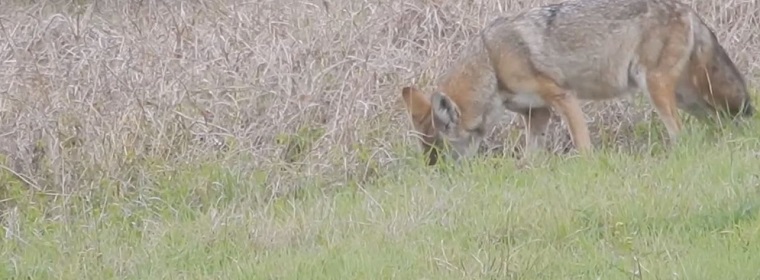-
info@aaanimalcontrol.com
Call us for help in your town
Humane Wildlife Education
About Coyote: Appearance, biology, life cycle, habitat, diet, behaviors
Need coyote removal in your hometown? We service over 500 USA locations! Click here to hire us in your town and check prices - updated for year 2020.
It's reported that the coyote population is booming right now, and it certainly seems to be that way, with the amount of calls to nuisance wildlife removal companies and experts specifically for coyotes definitely on the rise.
The reason for this? Amazing versatility and adaptability. The species has shown that is can pretty much survive everywhere, even surviving on little food and water if necessary.

What do coyote look like?
The humble coyote, known by its scientific name, “Canis latrans”, is a nuisance animal across most of North America in this day and age. Quite a large creature, it's smaller than a wolf but bigger than the average house dog, and it can weigh up to 50 pounds, although that's in the biggest of cases. Many of them fall somewhere between 20 and 40 pounds.
The tail is long and brushy, as long as 16 inches, and the body and head together can be between 30-40 inches.
How do coyote sound?
You will hear coyote if they live in the area close to your home. They call throughout the night, and the sound will travel on the wind. It's a very distinctive noise, one that can be heard over vast distances, and once the entire pack gets started, it can make for quite the noisy midnight chorus, that's for sure.
Where do coyote live?
Once upon a time, these creatures would have been more desert-dwelling animals, preferring prairies to back yards. They have adapted so well, they can now survive in mountainous regions as well as highly forested areas, and they have even learned to change their diet to work with what is around them.
You can find these creatures across most of North America now, and if you take a few moments to do some research on the animal, you will see that coyote-human interactions, and also coyote-pet interactions, are at what appears to be an all-time high.
What do coyote eat?
Their diet is ninety percent animal/meat product, but that covers a very wide range. Their diet will change from area to area. In watery spots, for example, they will eat whatever fish they can catch. They will eat frogs, but have a serious disliking of toads, and will also go after crustaceans and insects too. They are opportunistic hunters and feeders, making great use of what is around them. This is to avoid using energy on a big catch that they probably won't manage.
Coyote will work together as a pack to take down larger prey, but the youngsters are not usually involved in the bigger, more serious chases. Livestock is a big hit with these animals, mostly because of how easy the animals are to come by, as well as the ease of attack. Sheep and cattle are hardest-hit, with plenty of the livestock being held in a relatively small space, giving the coyote predator easy pickings.
When the coyote work alone, they will pounce on smaller mammals, and these will include digging and burrowing animals, as well as squirrels and ground squirrels. Rats and mice are on the menu, and if they come across a carcass, either an animal that has naturally died or the remains left behind by another predator, they will also eat that. The coyote can sometimes come into trouble when it attempts to eat road kill, often then running the risk of being hit by a passing vehicle themselves.
How do coyote behave?
The coyote is quite a sociable animal, living in packs and working together as part of a team. They tend to come together more when the food is harder to come by, so the colder part of the year will see larger packs than in the summer months.
They can also come together when the pups are due to be born. It will be during the spring that the females will build their den, a few weeks before they give birth to their young. Coyote babies are called pups, and there are usually between three and twelve pups born at once. The parents work together to rear their young, who will stay them with for about a year, at least. By the time the winter passes, and the next spring and summer too, the pups will be able to do life on their own, knowing how to hunt and care for themselves because of their protective parental guidance.
In the best conditions, the average coyote can live for 15 years. Many factors, including disease, human activity, and predation often mean they don't live that long ‘in the wild'
These creatures have great eyesight, and they also have a very impressive sense of smell. If they get a whiff of something they like, they can run at it with impressive speed, going as fast as 40 mph. They're also pretty good at swimming too, which is something many home and property owners are not aware of.
For more information, you may want to read How to get rid of coyotes or click on one of these guides that I wrote:
How To Guide: Who should I hire? - What questions to ask, to look for, who NOT to hire.
How To Guide: do it yourself! - Advice on saving money by doing wildlife removal yourself.
Guide: How much does wildlife removal cost? - Analysis of wildlife control prices.
Animals in the attic - read about the common species.
Noises in the attic - how to identify critters by their sounds.


















